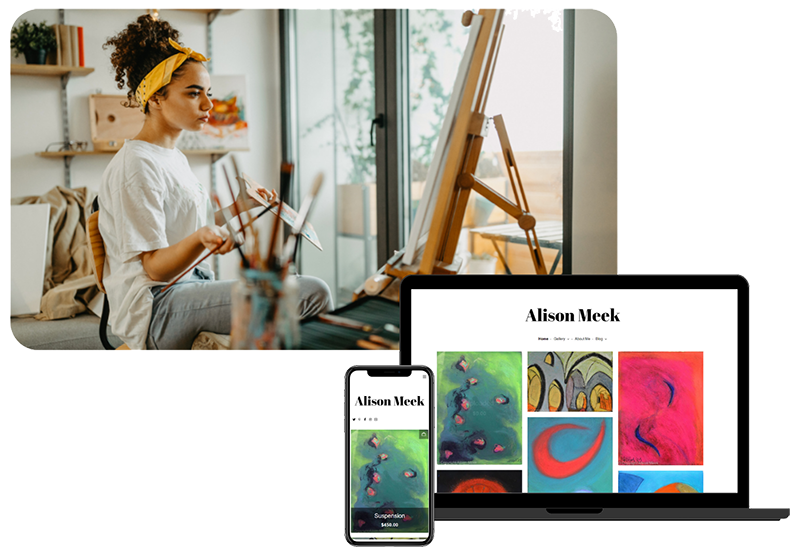Like holding your first solo show or selling your first artwork, seeing your work in print is an important career milestone for an artist. Press coverage can also build your profile, and bring your work to the attention of collectors, curators, and gallerists. So, what action can you take to connect with journalists and inspire them to feature your work?

Do your research
As with finding gallery representation, it is important to identify publications that suit the aesthetic and themes of your work, as you’re more likely to receive a positive response if you channel your energy into approaching journalists whose interests and tastes align with your own. Spend time getting to know the kind of artists and topics that publications regularly cover, bearing in mind that it is not only specialised art journals that review exhibitions and interview artists, but also interiors and lifestyle magazines. As well as print media, there is now also a plethora of online publications that could also serve as a platform for sharing your work.
If your budget won’t allow you to stock up at the newsagents, check whether your local library provides free digital access to magazines, as many in the UK now do.
Identify your story
At the same time as identifying who could be interested in writing about your work, it is important to reflect on why they might do so. An upcoming exhibition could be an opportunity to gain press coverage, but think about what other elements of your life or practice could be of interest to journalists: are you working in an unusual medium, exploring a topical issue, or do you have a beautiful or unusual studio that might appeal to an interiors magazine? As journalists often receive hundreds of press releases and emails per day, it is important to ensure that you have a clear ‘hook’ or story that can be swiftly and succinctly explained when contacting them.
Invest in good photography
Before reaching out to journalists, make sure that you have high-quality images that you can share with them, whether of your work, your studio, or perhaps even of yourself. Journalists often work to tight deadlines, and might be more inclined to include you in articles if they know that high-resolution images are readily available. If you choose to hire a professional photographer to shoot these, clarify in advance whether they are willing to hand over the copyright of images to you, as some may charge a fee for subsequent use.

How to approach journalists
A press release can be a useful tool for providing journalists with all the information that they might need about an upcoming exhibition, but rather than sending a blanket email to hundreds of publications at once you’re more likely to make an impression if you take the time to write a personal, tailored message, perhaps mentioning a recent article that you enjoyed, or a reason why your story might resonate with their readers.
While it is important to have a presence on Instagram, arguably the most art-friendly of social media platforms, many journalists actively use Twitter to follow trends or call for submissions. Invest time in building a profile on Twitter, sharing elements of your life and work as you would on Instagram. Then, identify journalists at the publications that you would like to target, follow and engage with their Twitter posts before approaching them via email.
If you’re unsure which specific journalist you should contact at a publication, or can’t find their email address, it could be worth phoning the magazine’s general number to ask for it, as (particularly in smaller publications) you might find yourself speaking to the journalist themself! You might also find it helpful to follow up your press release with a call to journalists’ direct lines, which could give you the opportunity to get to know them better, or instant feedback on whether your story would be suitable for their publication.
If you do not receive a response, or a publication does not respond positively to your work, do not take it personally: at a time when print media is facing increasing challenges, publications may not have the resources to manage all of the communications that they receive.
Be aware of deadlines
Although an upcoming exhibition gives you an excellent opportunity for press coverage, bear in mind that copy deadlines for magazines can often be weeks, if not several months, in advance. If planning a press campaign for a specific event, it is wise to identify publications that you wish to contact at least six months before the event, and call ahead to ask how far in advance you should send information. If your email provider has a scheduling tool, you can then schedule emails to be sent in line with their deadlines, or if not, make a note in your calendar of when you should be contacting them. Alternatively, you could invest in PR software such as that provided by Arts Media Contacts, which lists publications according to their copy deadlines, and allows you to schedule and send press releases in advance.







